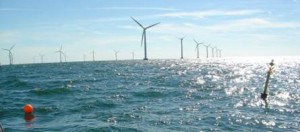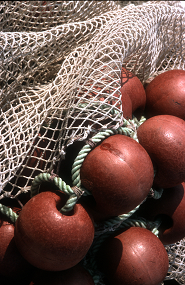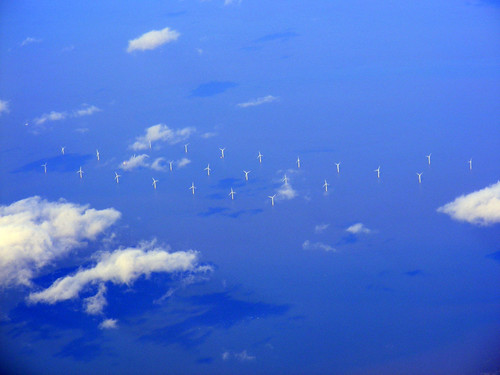In the competition for marine space, the fishing sector needs to prepare for management impacts from other directives than the EU Common Fishery Policy. Our purpose is to support the sector-specific stakeholders and policymakers and provide them with a tool for evaluating the spatial planning and management scenarios and spatial explicit fishery dynamics. This tool is informed by the different types of fishing activities and other activities occupying marine space. Continue reading “Impact assessment of spatial planning on the fishery economy and ecosystems”
Have your say on how spatial restrictions affect your fishing
 In relation to present simulations performed under the Baltic case study of the SOCIOEC project, the stakeholder feedback is expected to provide information on (and contribute to) what the stakeholders consider to be the most important risk factors in such spatial management. Furthermore, they are expected to contribute with information on how they plan to react to the spatial management measures in their short-term decision making (on a daily basis or at the trip level). For example, how they will react to increased fuel prices? Or how increase price is changing the choices of fishing grounds? Or how do fishermen react to some stocks with altered productivity? Or do they switch to another ground, fisheries, occupation, etc.? Or do they on a longer-term basis change their investment dynamics, exit from fishery, etc.?.) . Continue reading “Have your say on how spatial restrictions affect your fishing”
In relation to present simulations performed under the Baltic case study of the SOCIOEC project, the stakeholder feedback is expected to provide information on (and contribute to) what the stakeholders consider to be the most important risk factors in such spatial management. Furthermore, they are expected to contribute with information on how they plan to react to the spatial management measures in their short-term decision making (on a daily basis or at the trip level). For example, how they will react to increased fuel prices? Or how increase price is changing the choices of fishing grounds? Or how do fishermen react to some stocks with altered productivity? Or do they switch to another ground, fisheries, occupation, etc.? Or do they on a longer-term basis change their investment dynamics, exit from fishery, etc.?.) . Continue reading “Have your say on how spatial restrictions affect your fishing”
How spatial planning constrains cross-border fisheries: the bio-economic DISPLACE evaluation on the Baltic Sea
 With our approach we aim at modelling the interaction between fisheries and stock spatial dynamics and assessing the interlinked consequences on both the vessel economy and the viability and sustainability of the harvesting (including the issue of energy efficiency for greener fisheries). We explore alternative fishing effort allocation scenarios and management options. As such, we are designing a benchmark tool for conducting management strategy evaluations to capture short-term economic reactions from individual fisherman tactical decision-making.
With our approach we aim at modelling the interaction between fisheries and stock spatial dynamics and assessing the interlinked consequences on both the vessel economy and the viability and sustainability of the harvesting (including the issue of energy efficiency for greener fisheries). We explore alternative fishing effort allocation scenarios and management options. As such, we are designing a benchmark tool for conducting management strategy evaluations to capture short-term economic reactions from individual fisherman tactical decision-making.
In the growing marine spatial planning (MSP) legislative context, concurrent uses of the sea are constraining the possibilities of displacing each vessel´s fishing activities. These new constraints call for studies that would empower the fishing industry with the right tools and knowledge to engage in fair MSP dialogues. We should consider the impact assessment and scenario evaluation of wider marine cross-sector use, exploitation of the marine environment and competition for space in a spatial evaluation tool and our ongoing evaluation is precisely dedicated to investigating this aspect.
Spatial planning constraining cross-border international Baltic fisheries
 We recently presented a communication to the IIFET conference (International Institute of Fisheries Economics and Trade) about an impact assessment we are conducting on the large-scale western Baltic Sea fisheries:
We recently presented a communication to the IIFET conference (International Institute of Fisheries Economics and Trade) about an impact assessment we are conducting on the large-scale western Baltic Sea fisheries:
“Supporting bio-economic evaluation of spatial planning constraining fishing activities: be quantitative, spatially-explicit, vessel-oriented, dynamic stochastic, and coupled to fish populations”
Maritime spatial planning and fishery management are likely to generate extra costs for the fisheries by constraining fishermen activity with conservation areas and new utilization of the sea such as offshore windmill parks. Growing concerns for greener and energy efficient fisheries are also likely to alter existing fishing patterns already varying from fishery to fishery and from vessel to vessel.
Continue reading “Spatial planning constraining cross-border international Baltic fisheries”
Participatory modeling of fisheries for supporting maritime spatial planning
 Modelling the interactions between fishery and stock dynamics as well as the economic fishery importance on a highly spatial disaggregated scale like in DISPLACE, is useful in context of broader spatial planning, marine management, and stakeholder involvement.
Modelling the interactions between fishery and stock dynamics as well as the economic fishery importance on a highly spatial disaggregated scale like in DISPLACE, is useful in context of broader spatial planning, marine management, and stakeholder involvement.
It is important to develop supporting tools for impact evaluations that can inform all parties (scientists, stakeholders, and managers) on the overall fishing sector dynamics on a highly disaggregated scale to develop a collective understanding and common discussion platform based on quantitative predictions of impacts and beneficial/detrimental effects of any new spatial marine planning project . As such, the DISPLACE model can be used to obtain further information on fishermen behavior with direct input from stakeholders (e.g., here).
 Such an approach should foster management choices to be based on a more objective and transparent basis and on actual feedback from the stakeholders when they react to spatial planning. More participatory management requires quantitative support and a common platform for input that will likely promote good fishing practices and achieve better compliance with the regulations and where stakeholders can feel more engaged in the ecosystem-based fisheries management decision process (also advocated here).
Such an approach should foster management choices to be based on a more objective and transparent basis and on actual feedback from the stakeholders when they react to spatial planning. More participatory management requires quantitative support and a common platform for input that will likely promote good fishing practices and achieve better compliance with the regulations and where stakeholders can feel more engaged in the ecosystem-based fisheries management decision process (also advocated here).
The goal is to also inform managers with quantitative supports about the potential gain of spatial regulations against the cost for displacement when fishermen loose access to valuable fishing grounds and/or have to travel more to go fishing from their home harbor to make a living out of the catches.
High-resolution mapping of fishing activities: toward well-informed marine spatial planning
Multi-sectoral and multi-disciplinary marine spatial planning methods are prevailing in the EU Marine Strategy Framework Directive. Such integrated marine management needs to consider the commercial fishery and all other sector uses of the sea, such as transport, energy exploitation and recreational use.
Consequently, each of these pressures on the marine ecosystem needs to be mapped.
 Annual average fishing intensity (2010-2012) at the surface level (left; sediment abrasion < 2cm) and subsurface level (right; abrasion ≥ 2 cm) for all bottom contacting gears from Denmark, Sweden and Germany. (Source: here)
Annual average fishing intensity (2010-2012) at the surface level (left; sediment abrasion < 2cm) and subsurface level (right; abrasion ≥ 2 cm) for all bottom contacting gears from Denmark, Sweden and Germany. (Source: here)
Simultaneously, the EU Common Fisheries Policy recently recognized the importance of accounting for heterogeneity in fishing practices from different fleets for managing
commercial fisheries. It was acknowledged that a shift should take place from managing individual fish stocks towards managing fleets, mixed fisheries, and economic issues.
Fine-grained VMS data enable obvious improvements to describe used areas and spatial fishing pressure with higher resolution than the ICES rectangles. Hence, the linkage of VMS with logbooks constitutes very valuable information for mapping the spatiotemporal heterogeneity of landings and economically important fishing grounds to act as the basis for management decisions and designation of priorities areas.
 These maps can be used directly for conditioning the DISPLACE model and inform area-based management performing strategy evaluation and scenario modelling of different management options associated with, for example, the establishment of spatial regulated areas and displacement of fishing effort in relation to ecosystem conditions (sensitive habitats), variability in fish stock occurrence and other uses of the sea.
These maps can be used directly for conditioning the DISPLACE model and inform area-based management performing strategy evaluation and scenario modelling of different management options associated with, for example, the establishment of spatial regulated areas and displacement of fishing effort in relation to ecosystem conditions (sensitive habitats), variability in fish stock occurrence and other uses of the sea.
Impact assessment of windmill parks on fisheries
 An on-going work is to apply and downscale the DISPLACE model to the commercially important and busy Western Baltic marine area where several utilisations of the sea currently coexist. In line with this it is evaluated to which extent the international plans for offshore windmill parks in the Baltic area are affecting the fishing opportunities per activity and fishing communities in the vicinity of the planned windmill sites.
An on-going work is to apply and downscale the DISPLACE model to the commercially important and busy Western Baltic marine area where several utilisations of the sea currently coexist. In line with this it is evaluated to which extent the international plans for offshore windmill parks in the Baltic area are affecting the fishing opportunities per activity and fishing communities in the vicinity of the planned windmill sites.
Hence, preliminary data mining shows that the planned offshore windmill parks in the area do not really interfere with important fishing grounds for the Danish fisheries. Continue reading “Impact assessment of windmill parks on fisheries”
DISPLACE – An individual-based model of fishing vessels
DISPLACE stands for a Dynamic, Individual-based model for Spatial fishing PLAnning and effort displaCEment. A paper in press can be found here
A wiki page has just been set up at www.displace-project.org/wiki to host documentation and links to the source code repository (in progress). Make it transparent, peer-checked and prone to cooperative development.
 The DISPLACE project is attempting to develop and provide a platform primarly for research purposes to transform the fishermen’s detailed knowledge into models, evaluation tools and methods that can provide the fisheries with research and advice. We need also models that can serve as a basis for decision support tools for (fishery) managers. Among other goals, economic benefit of stock replenishment and sustainable harvesting should be demonstrated. As a general rule, it is important to evaluate the combined ecological and economic impacts of fishery management before its implementation (i.e. impact assessment). Continue reading “DISPLACE – An individual-based model of fishing vessels”
The DISPLACE project is attempting to develop and provide a platform primarly for research purposes to transform the fishermen’s detailed knowledge into models, evaluation tools and methods that can provide the fisheries with research and advice. We need also models that can serve as a basis for decision support tools for (fishery) managers. Among other goals, economic benefit of stock replenishment and sustainable harvesting should be demonstrated. As a general rule, it is important to evaluate the combined ecological and economic impacts of fishery management before its implementation (i.e. impact assessment). Continue reading “DISPLACE – An individual-based model of fishing vessels”
